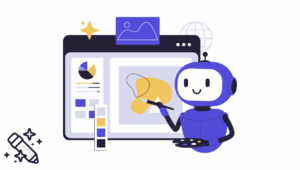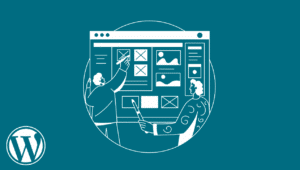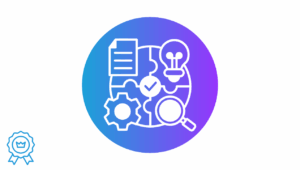So, you want to build a WordPress website. A few years ago, that meant opening a blank page, picking a theme, tweaking some widgets, and hoping your client doesn’t ask for anything custom. Today, your co-designer might just be artificial intelligence. AI is basically changing how we think about design and communicating ideas visually. In this article, we’ll explore how AI (artificial intelligence) is changing how we design WordPress websites.
On one side, traditional machine learning is great at pattern recognition and optimizing layouts based on performance. On the other hand, large Language Models can interpret vague human prompts and turn them into actual HTML and CSS. So, if you’ve ever wondered about machine learning vs. LLM, WordPress is becoming their most exciting comparison ground.
In this article, we will discuss how AI enhances WordPress design and redefines what it means to be a designer.
How AI Reshapes the WordPress Design Workflow
From automated code generation to intelligent layout suggestions, here’s a breakdown of how AI changes every stage of WordPress design: Explore how AI (artificial intelligence) is changing how we design WordPress websites
1. Web Building: AI Changing Design
When building a website or landing page, AI can analyze your website’s niche, target audience, and analyze competitors. Then it will propose design patterns with higher conversion potential.
For instance, AI might suggest you include social proof blocks early in aSaaS website page or ask you to highlight product bundles and discounts on an e-commerce store. AI integrations can also assist with backend development tasks like debugging or delivering code based on your description.
2. Automated A/B Testing and Analytics
Traditional A/B testing requires manual setup and analysis. But, AI-powered tools use machine learning to:
- run tests with dynamic traffic allocation,
- identify high-impact test areas,
- analyze results, and
- deploy winning variants autonomously.
So, instead of running endless experiments and sifting through analytics, AI identifies outcomes faster. Additionally, it makes informed changes with little to no manual intervention.
3. Personalized User Experience: AI Changing Design
AI analyzes large data sets to provide insights and predictions, which help you make the right decisions. Since decisions are usually based on market trends, user behavior, or performance metrics, AI can analyze each to suggest website improvements.
For instance, AI can analyze user data or behavior to dynamically adjust content, call-to-actions, or layout for different audiences. If you own an online shop, AI can also suggest products or services to improve user engagement and increase satisfaction.
4. Automated Content Generation
With different plugins and integrations, you can generate content directly within WordPress. This goes beyond blog writing. AI can create page copy, headlines, microcopy for buttons, and even full product descriptions.
For instance, an online store launching a new product can auto-generate SEO-optimized descriptions for different audience personas. An AI model trained on existing blog content can also replicate the site’s tone of voice. This further promotes consistency across all pages.
5. Improved Search Engine Optimization
The importance of SEO cannot be overstated, as it drives organic traffic to websites. AI can assist you in optimizing your WordPress websites for search engines by suggesting improvements and offering:
- keyword and topic cluster suggestions based on competitor analysis,
- on-page optimization grading, and
- semantic content suggestions, like relevant terms you are missing.
6. Conversational Chatbots and Customer Support: AI Changing Design
AI-powered chatbots transform customer support by handling advanced user interactions, such as customer support and sales guidance. These chatbots learn from user queries over time and are often trained on the site’s content, including FAQs, blogs, and product pages.
AI Is the Future of WordPress Design
WordPress design is becoming more intelligent, adaptive, and deeply infused with AI capabilities that perform well. At this point, AI is no longer optional when designing websites. It is necessary for:
- accelerated workflows–from instant layouts to code generation
- automating testing,
- and personalization based on real business data.








